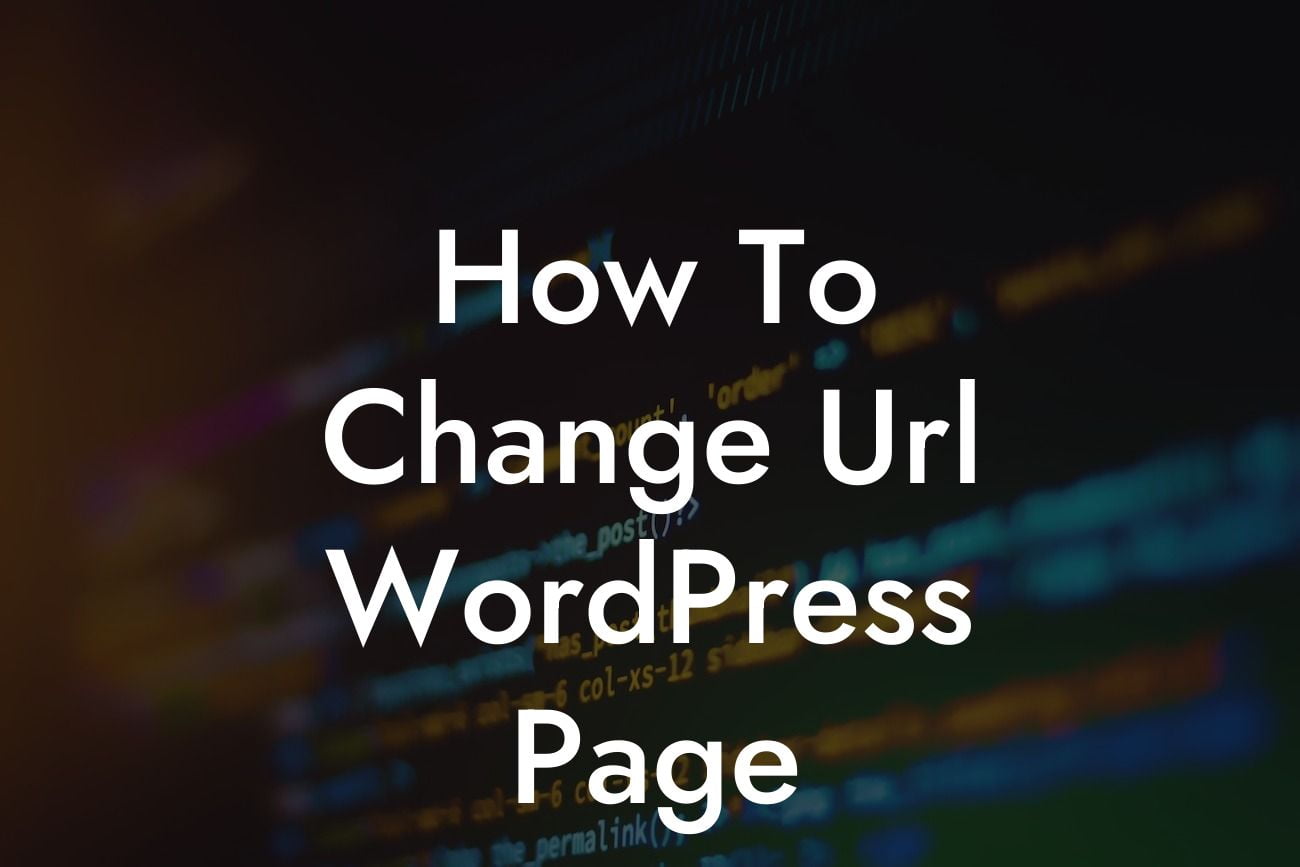Changing the URL of your WordPress page may seem like a daunting task, but it can greatly impact your website's search engine visibility and user experience. In this guide, we will take you through a step-by-step process on how to change the URL of your WordPress page seamlessly. Say goodbye to outdated URLs and embrace the extraordinary with DamnWoo's tips and tricks.
Engaging Heading: Understanding the Importance of URL Structure
The first step in changing the URL of your WordPress page is understanding the importance of a well-structured URL. Search engines and users alike prefer URLs that are descriptive, concise, and easy to read. By optimizing your URL structure, you can improve your website's organic search visibility and click-through rates.
Engaging Heading: Checking your Permalink Settings
Before diving into the process of changing the URL, it's crucial to double-check your permalink settings. WordPress provides different options for permalinks, such as plain, day and name, month and name, numeric, and post name. Ensure that you have selected a suitable permalink structure that aligns with your SEO goals.
Looking For a Custom QuickBook Integration?
Engaging Heading: Preparing for URL Change
Now that you understand the importance of URL structure and have verified your permalink settings, it's time to prepare for the URL change. Start by making a backup of your website to avoid any potential data loss. Next, create a plan to redirect old URLs to new ones using 301 redirects, ensuring that visitors and search engines find the updated page easily.
Engaging Heading: Changing the URL in WordPress
Here comes the exciting part – changing the URL of your WordPress page. Begin by navigating to the page you want to modify in your WordPress dashboard. Access the page editor and locate the permalink section. Here, you can update the URL slug to reflect the new desired URL. Make sure to use relevant keywords and keep the URL concise and descriptive.
Engaging Heading: Updating Internal Links and Navigation Menus
After changing the URL of your page, it's essential to go through your website and update any internal links or navigation menus that might be pointing to the old URL. Broken or incorrect links can affect user experience and search engine rankings, so pay close attention to this step.
How To Change Url Wordpress Page Example:
Let's say you have a WordPress page about "Top 10 SEO Tips" with the old URL as yoursite.com/top-ten-seo-tips. You want to update it to yoursite.com/seo-tips-for-success. By following the steps mentioned earlier, you can easily change the URL and ensure that all internal links and navigation menus are updated accordingly.
Congratulations! You have successfully changed the URL of your WordPress page. By optimizing your URL structure and providing a seamless user experience, you have taken a significant step towards enhancing your online presence. Explore other guides on DamnWoo to unlock more WordPress tips and tricks, and don't forget to try our awesome plugins for added functionality. Don't keep this knowledge to yourself – share this article with others who can benefit from it. Together, let's elevate the success of small businesses and entrepreneurs.
[End of article]













